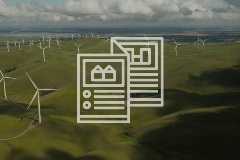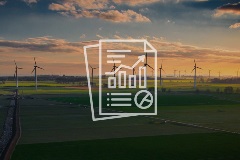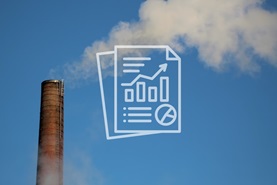What are the Key Themes Driving Investor Climate Reporting?
In the context of the climate crisis, investors need insightful climate research, ratings, and data. Investors must balance the physical risks of climate change alongside the transition risks of moving to a net-zero economy.
In particular, regulatory guidance like the Task Force on Climate-related Financial Disclosures (TCFD) has placed urgency on the investment community to take a more active role to address global climate change. The TCFD framework is becoming increasingly important as it is shifting from a voluntary approach to being the main global regulatory response to climate risk, with many regions now mandating it for compulsory climate reporting.
Featured Content

eBook | Managing Risks for a Changing Climate: A Guide for Institutional Investors
Is your organization planning on or has committed to aligning portfolios to a net-zero pathway and must report on decarbonization efforts? Read our latest ebook for insights into the investment and portfolio risks related to physical climate hazards and the transition to a low carbon economy.
Climate Content
Mandatory Scope 3 Emissions Reporting in the U.S. and Canada: Most Companies Are Unprepared
Learn just how prepared U.S. and Canadian companies are for the proposed scope 3 emissions disclosure rules and how investors can leverage engagement to help companies meet the various challenges of GHG emissions reporting.
Policy Responses to Climate Change: The EU’s Fit for 55 Package and Its Implications for Companies and Investors
Governments need to be more decisive to slow global temperature rise. The EU’s Fit for 55 package, with its ambitious targets for energy-intensive sectors, is an example of the required policy response needed to decarbonize global economies.
Scope 3 Supply Chain Emissions: Five Questions Investors Need to Know
To assess climate-related transition risks, investors should evaluate GHG emissions across portfolio companies’ value chains. In this blog post we’ll answer the key questions investors need to know about supply chain GHG emissions, and why decarbonization of the supply chain is an essential component of an effective climate transition strategy.
Managing Risks for a Changing Climate: A Guide for Institutional Investors
Gain a better understanding of physical and transition climate risks and their potential impacts to effectively respond to climate risks in investment portfolios and comply with the growing list of climate-focused reporting frameworks and regulations.
Capturing the Direct and Indirect Risks of Physical Climate Change in Investment Portfolios
Investors face a unique set of challenges in assessing the physical climate risks affecting their portfolio companies. In this blog discover the direct and indirect physical climate risks impacting companies and their supply chains.
Our Solutions
Morningstar Sustainalytics’ Climate Solutions enable investors to effectively evaluate both transition and physical climate risks. Our products can help investors build comprehensive climate investment strategies, fulfill disclosure requirements, advance engagement activities, and evaluate climate risks.

Physical Climate Risk Metrics
Assess and disclose the direct and indirect physical climate risks of climate change related exposure.
Learn More
Low Carbon Transition Ratings
Receive a forward-looking assessment of a company’s current alignment to a net-zero pathway.
Learn More
Carbon Emissions Data
Evaluate and analyze companies’ GHG emissions across scope 1, 2, and 3 emissions.
Learn MoreAdditional Resources
Net-Zero Transition
Low Carbon Transition Ratings from Morningstar Sustainalytics
In the context of the climate crisis, investors need robust research, data, and tools to identify and manage the climate transition-related risks and opportunities of their portfolio companies. Morningstar Sustainalytics’ Climate Solutions team created the Low Carbon Transition Ratings (LCTR), a new flagship ratings product, to help investors do just that.
Low Carbon Transition Ratings Methodology
Leveraging our Low Carbon Transition Ratings, investors can respond to regulatory initiatives, implement net-zero strategies, fulfill client net-zero mandates and obtain transparency into company actions by integrating climate research into their investment decision-making processes.
Physical Climate Risks and Carbon Emissions
Brochure | Physical Climate Risk Metrics
As climate change challenges the modern investment landscape, evolving marketplace expectations will require investors to disclose both transition and physical climate risks associated with their investments. To help investors better understand their exposure to physical climate risks, Sustainalytics, in collaboration with XDI, an award-winning global leader in physical climate risk analysis, are introducing Physical Climate Risk Metrics (PCRM) as Sustainalytics’ first Physical Climate Risk offering to align with evolving reporting needs. XDI's analysis supports decision-making in finance, business, and governments worldwide, with detailed, investment-ready information for physical climate risk.

















